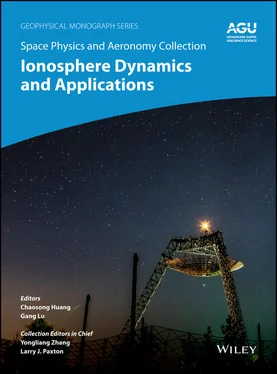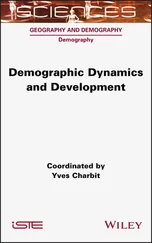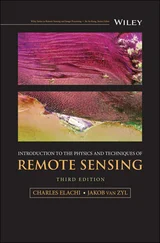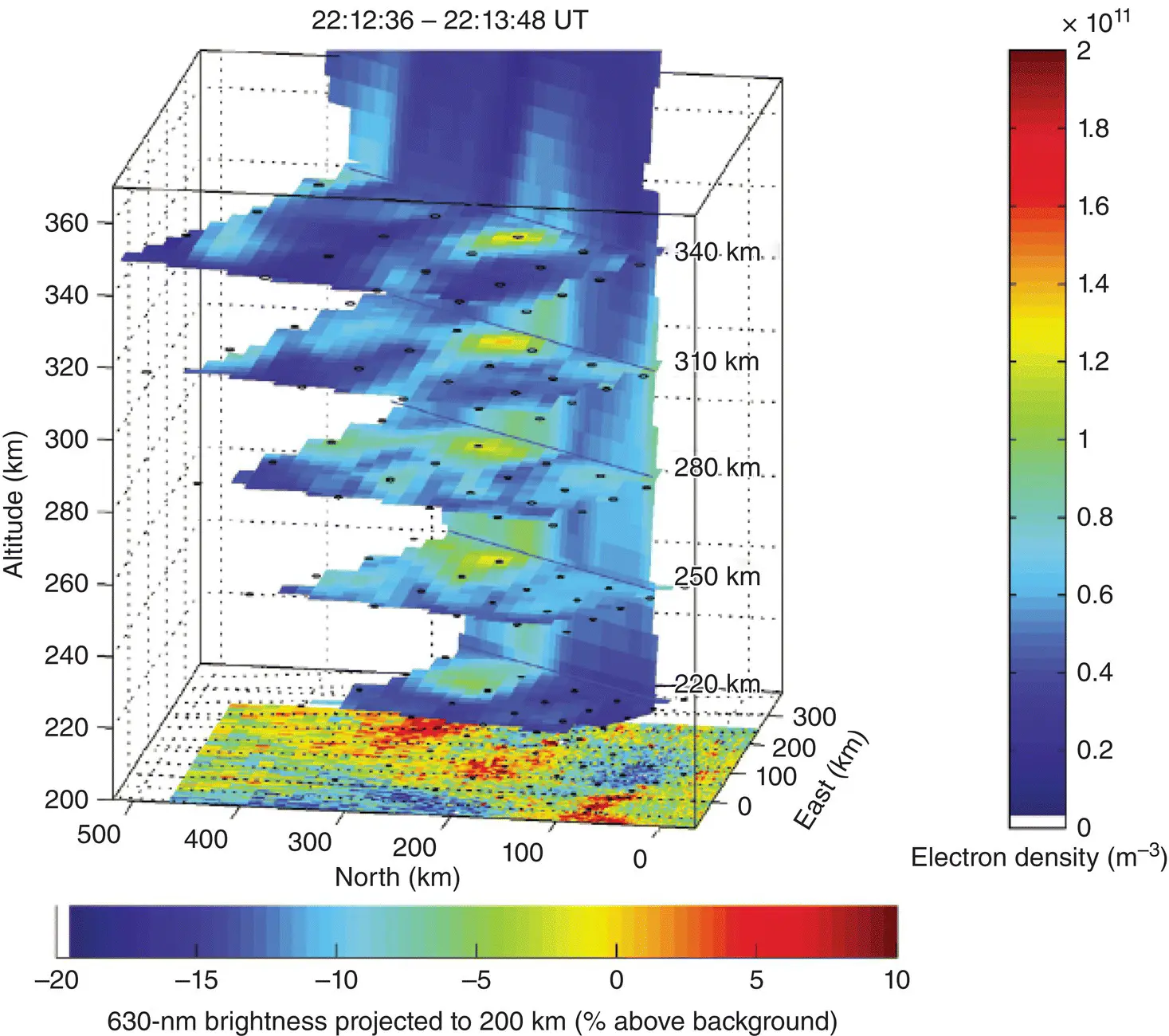
Figure 4.4 Volumetric image of a patch using RISR‐N data on 11 December 2009 at 22:12:36–22:13:46 UT. The horizontal slices show the electron density at 220, 250, 280, 310, and 340 km altitude. The contemporary 630.0 nm all‐sky image is projected onto the 200 km plane. The locations of the radar beams at each altitude slice are indicated as black circles
(from Dahlgren et al., 2012b; Reproduced with permission of John Wiley and Sons).
Using the most field‐aligned beams from RISR‐C, Ren et al. (2018) automatically identified over 400 patches in 2016 and statistically constructed the patch electron density, electron and ion temperatures, vertical flow and flux profiles in the noon, dusk, midnight, and dawn sectors. Figure 4.5selectively presents the median profiles of those parameters at the center of patches (blue curves) in the noon and midnight sectors, compared with the sector (red curves) and overall (black curves) median profiles. As expected, the patch median density is higher than the sector median, and the F‐region peak density (h mF 2) decreases by ~42% from the dayside (~3.6 x 10 11m ‐3) to the nightside (~2.1 x 10 11m ‐3). In the noon sector, the bottom F‐region density inside the patch is actually lower than that of the surrounding region, consistent with the SED density profile observation shown in Zou et al. (2013). As suggested in Zou et al. (2013), these SED plasma can be lifted to higher altitudes due to a combination of poleward convection flow and equatorward thermospheric wind. When the production in the lower F region is not fast enough to replenish the transported plasma, this lifting motion will result in a lower F‐region density than the surrounding region. This observation has also been reproduced in the numerical simulation performed by (Zou & Ridley, 2016).
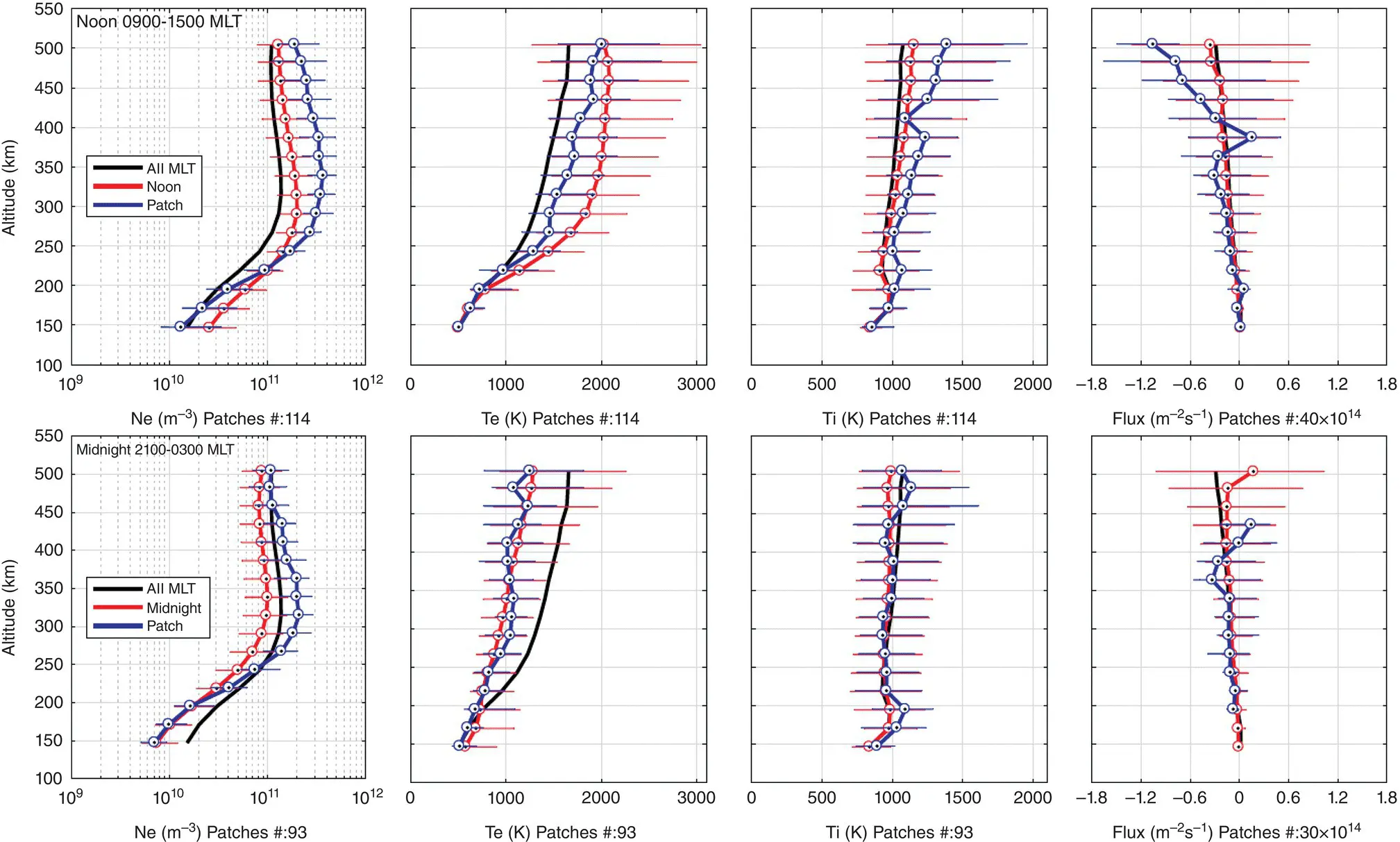
Figure 4.5 Polar cap patch median profiles compared with sector median and all‐sector median profiles. From left to right, plasma density, electron temperature, ion temperature, and ion flux are shown. The ion flux profiles are based on measurements from the RISR‐C vertical beam
(modified based on Ren et al., 2018; Reproduced with permission of John Wiley and Sons).
In addition, Ren et al. (2018) found that the median electron temperature at the center of the patch is suppressed by as much as ~380 K compared with the sector median temperature in the noon sector. The patch median ion temperature is very close to the background ion temperature in all sectors except ~100 K higher in the noon sector, and the ion vertical flows and fluxes within patches are typically downward. Plasma temperature is often used to infer whether local particle precipitation is present in the patch. It can also shed light on the patch generation mechanisms, since higher electron temperature would be expected if local precipitation is responsible for the patch formation. Together with the evidence that the bottom F‐region patch density is smaller than that of the surrounding region in the noon sector, these observations suggest that the major plasma source for patches is the dayside solar EUV produced plasma transported into the polar cap region, which is consistent with the statistical UT dependence found in both modeling (Sojka et al., 1994) and observation (David et al., 2016). However, we also need to realize that the RISR‐C is deep in the center of the polar cap, where it takes time for the patch to drift from the dayside cusp region to reach, and the electron temperature can change along the trajectory. Therefore, a careful numerical modeling study is required to quantify the cooling rate inside the patch and evaluate whether the electron temperature is a good and sufficient indicator of the origin of the patch plasma.
Although statistically the polar cap patches have lower electron temperature than that of the surrounding regions, “hot” patches, which have higher electron temperature than the surrounding regions, have also been identified using DMSP observations at ~850 km (Zhang et al., 2017). It is found that this type of patch is associated with local particle precipitation and convection flow shear, and might be produced when the traditional patches convect into the particle precipitation region.
4.4 DYNAMIC EVOLUTION OF POLAR CAP PATCHES
Polar cap patches are density enhancements in the F region and topside ionosphere, and thus they should convect in the polar region at the ExB convection velocity. Thomas et al. (2015) carefully compared the patch drifting speed obtained from 630 nm airglow images and that measured by the SuperDARN radars. They confirmed that the horizontal motion of the optical patches is consistent with the background plasma convection, and thus patches can be used as tracers of polar cap convection. In their case, the convection flow speed within the patch exceeded 500 m/s. Because the ionospheric convection is controlled by the solar wind and IMF condition, as well as magnetospheric dynamics (in particularly on the nightside), the transport of patch across the polar cap can thus be of considerable complexity, including substantial rotation as observed in Oksavik et al. (2010).
Optical images of patches provide clues of 2‐D horizontal structure of the patch. Hosokawa et al. (2010) provide a good example of using the optical signature of patches as a tracer for mesoscale plasma convection flow. They combined observations from a redline imager located at Resolute Bay with plasma convection flow estimates derived from SuperDARN line‐of‐sight plasma velocity measurements. In their case study, they showed the bifurcation of a patch as it transited the polar cap. The bifurcation occurred as the patch moved into a region where the plasma convection field diverged. However, the number of imagers is limited and they can provide images only under certain conditions, such as in the dark and under clear sky. Furthermore, the imagers are biased to patches that are at a sufficiently low enough altitude to allow for the chemistry to generate the observed emissions. Perry and St. Maurice (2018) provide evidence confirming the notion that higher altitude patches generate dimmer emissions than lower altitude patches. Thus, it is conceivable that high‐altitude patches and their dim optical signatures may go undetected by some imagers.
The fast‐growing number of GNSS receivers in the high‐latitude regions provides another unprecedented opportunity to reveal the horizontal morphology of polar cap density structures and to visually track their dynamic motion on a regular basis. Taking advantage of the fact the patches can be used as convection flow tracer, studies have been trying to use it to infer the underlying coupling processes between the magnetosphere and ionosphere (Nishimura et al., 2014; Zhang et al., 2013a; Zou et al., 2015; Zhang et al., 2016a). For example, using the 2‐D GPS TEC maps with superposition of the SuperDARN convection patterns (Zhang et al., 2013a) reported direct observations of the full evolution of patches during a geomagnetic storm, including entering the polar cap from the dayside cusp and turning into a blob on the nightside after exiting the polar cap. Therefore, through observing the life cycle of a patch in the ionosphere, the timescale for the global magnetospheric convection can also be inferred. A follow‐up study by (Zhang et al., 2015) using global TEC maps revealed that a complete magnetospheric convection cycle, that is, Dungey cycle, takes about 3 hours.
Читать дальше
